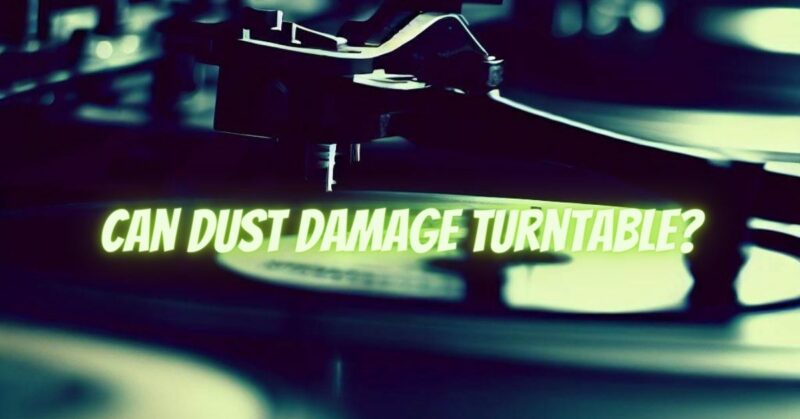Dust is a common enemy when it comes to audio equipment, and turntables are no exception. In this article, we explore the potential risks associated with dust and its impact on turntable performance. Understanding how dust can affect your turntable will help you take necessary precautions to maintain its longevity and optimal performance.
- Needle and Stylus Damage:
Dust particles that settle on the record surface can be detrimental to the delicate stylus and needle of your turntable. When the stylus comes into contact with dust, it can cause the needle to skip, mistrack, or even become damaged. Dust particles may also accumulate on the stylus tip, affecting its ability to accurately read the grooves and resulting in distorted sound reproduction.
- Sound Quality Degradation:
Dust on the record surface can create unwanted noise, pops, and crackles during playback. As the stylus moves along the grooves, it encounters dust particles, which can cause interference and disrupt the smooth tracking of the needle. This interference manifests as audible disturbances, affecting the overall sound quality and diminishing the enjoyment of your vinyl records.
- Record Surface Damage:
Dust particles may contain abrasive substances or debris that can scratch or damage the surface of your vinyl records. When the stylus comes into contact with these particles, it can lead to visible scratches on the record, compromising both the sound quality and the longevity of the vinyl itself. Regular cleaning and maintenance help prevent dust-related surface damage.
- Motor and Mechanism Impairment:
Dust accumulation can impact the mechanical components of your turntable, including the motor, belts, and bearings. Excessive dust can interfere with the smooth operation of these parts, affecting the rotational stability and speed accuracy of the turntable. This can result in irregular playback speeds, increased wow and flutter, and an overall compromised performance.
- Tonearm Tracking Issues:
Dust particles can also find their way onto the tonearm assembly, affecting the tracking ability and balance of the tonearm. This can lead to misalignment, mistracking, and suboptimal performance. Additionally, dust accumulation in the tonearm bearings can introduce unwanted friction, impacting the smooth movement of the tonearm during playback.
To prevent dust damage to your turntable, it is important to keep it clean. You can do this by:
- Cleaning the record before playing it: Use a soft brush or a record cleaning solution to remove any dust or dirt from the record.
- Cleaning the turntable regularly: Use a vacuum cleaner or a brush to remove any dust or dirt from the turntable.
- Keeping the turntable in a clean environment: Avoid placing the turntable in dusty areas. If you must place it in a dusty area, try to keep it covered when not in use.
Conclusion:
Dust can pose a significant threat to the performance and longevity of your turntable. It can damage the stylus, degrade sound quality, cause surface scratches on records, impair mechanical components, and affect tonearm tracking. To mitigate these risks, regular cleaning of your turntable, record collection, and stylus is essential. Use appropriate cleaning tools, techniques, and anti-static solutions to minimize dust accumulation and maintain optimal performance. By implementing proper cleaning and maintenance practices, you can safeguard your turntable against the potential damaging effects of dust and enjoy a pristine vinyl listening experience for years to come.


